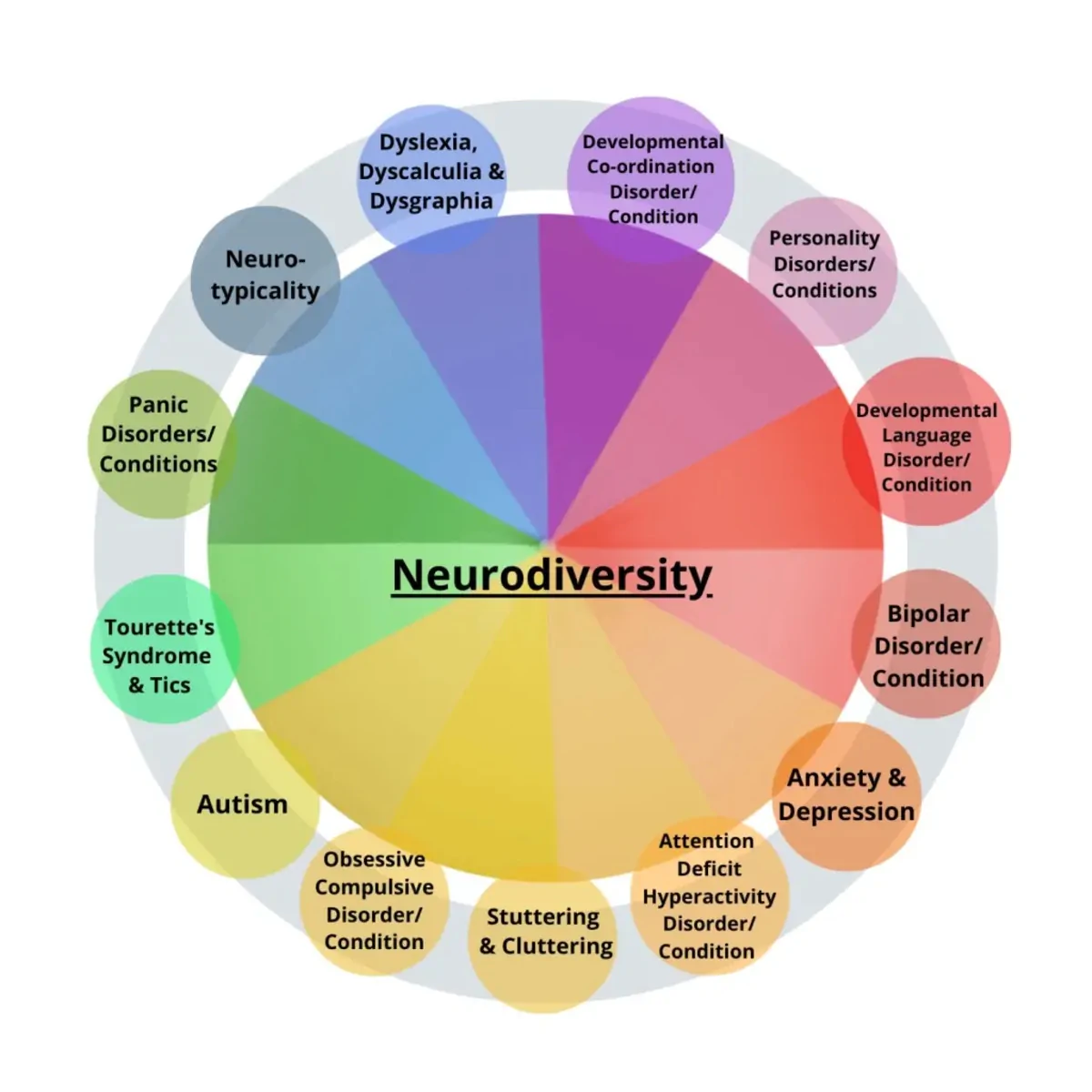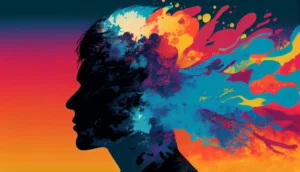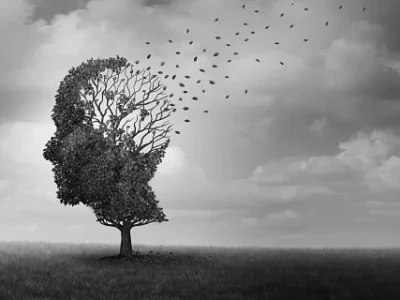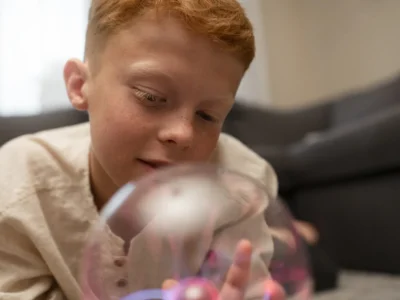Neuropsychologist Diana Carolina Gomez Blanco introduces us in this article to the concept of neurodiversity.
In recent years a concept has emerged in the spheres of autism associations and other neurodivergences that is changing the paradigm with which disability is usually understood, as well as the so-called neurodevelopmental disorders and psychiatric disorders, which questions whether what we call a “normal” brain really exists.
In this sense, humans have developed exact standards and measures. Thus, for example, in the basement of the headquarters of the International Bureau of Weights and Measures (BIPM), in Sèvres (France), lies that metal piece that represents the world standard for the kilogram, and all kilogram measurements are calibrated and weighed with that prototype, which is highly guarded.
Well, there is no such standard for the human brain. At the moment there is no organ preserved in any museum used as the standard for measuring what is normal and abnormal, despite the fact that over the years attempts have been made to standardize human behavior and cognition based on different case studies: models that pointed to brain weight as equivalent to intelligence level, the popularization of intelligence tests to classify it, or the proposal of psychiatric classifications for those behaviors that deviate from the expected standard.
However, today, thanks to advances in neuroscience studies, it has come to be understood that it is not so simple to determine what is normal or abnormal. How certain is it that what we currently know as disorders are not exactly that? (Armstrong, 2015, p. 1-4).
What is neurodiversity – Concept of neurodiversity
The neurodiversity concept was first described in 1998 by sociologist and activist Judy Singer, who conceived it as a synonym for neurological biodiversity. It is estimated that between 15% and 20% of the population has a different neurological development, being called neurodivergent, while those who follow the expected development are called neurotypical (Fundaciò factor humà, 2020, p. 2). Both neurotypical and neurodivergent people make up the neurodiversity of the human brain.
Among the so-called neurodivergent are people with diagnoses such as ADHD, ASD, dyslexia or anxiety disorders, for which it is questioned whether to continue calling them disorders, since sometimes the term conditions is preferred. Thus, ASD (Autism Spectrum Disorder) is considered ASC (Autism Spectrum Condition), although to this day such modifications have not been made in the different diagnostic manuals.

The origin of neurodiversity
Neurodiversity is based on the idea that during the formation of the human brain two major processes occur: one that establishes the basic development of essential human behavior and one that marks the personal development of qualities, capacities and multiple intelligences.
In this sense it is highlighted that genes, in interaction with all the chromosomal material that accompanies them, initiate, direct and regulate the creation of the brain, with all those processes that mark its development throughout the prenatal and postnatal period. However, it is worth questioning how many neurons are born in a specific individual and how many are in a condition to perform their role as they should.
It is precisely here that it has been known, so far, that neural networks are susceptible to aspects such as nutrition, care and many other factors, without that representing the presence of pathologies, but rather differences in functionality, which mark brain diversity, where despite all of us having the same human brain we all have differences, and these are what characterize neurodiversity.
At this point it is important to clarify the key concepts related to neurodiversity and their proper use. Neurodiversity is not a perspective, an approach, a belief, a political ideology or the like. On the contrary, neurodiversity is a biological fact, it is the diversity of human brains and minds, it is the infinite variation in neurocognitive functioning in the human species.
It is not a trait that a person possesses, but a group, and when a person diverges from the dominant or “normal” standard of neurocognitive functioning in a society, they are not neurodiverse, they are neurodivergent, and this should be differentiated from the neurodiversity paradigm or the neurodiversity movement.
Neurodiversity is proposed as an alternative to the concept of disability. As Thomas Armstrong says:
“My own definition of the word includes an analysis of what for a long time have been considered mental disorders of neurological origin, but which may represent alternative forms of natural human differences” (Armstrong, 2010: p. 21).
Eight basic principles of neurodiversity
Therefore, among the postulates of neurodiversity, 8 basic principles have been proposed (Lopera Murcia, 2015, p.252):
- The human brain functions more like an ecosystem than like a machine.
- Humans and human brains exist along continuous spectra of competence. That is, there are subtle differences in cognitive domains. From, for example, a high capacity for memorization to severe deficits in it.
- A person’s competence is defined by the values of the culture to which they belong.
- Being considered disabled or gifted depends, to a large extent, on when and where you were born.
- Success in life is based on the brain’s adaptation to the needs of the environment.
- Success in life also depends on modifying your environment to fit the needs of your unique brain (niches).
- Niche construction includes career and lifestyle choices, assistive technologies, human resources and other strategies that improve life and adapt to the specific needs of the neurodiverse individual.
- Positive niche construction directly alters the brain which, in turn, reinforces its capacity to adapt to the environment.

Subscribe
to our
Newsletter
Functional neurodiversity
Part of the principles of neurodiversity are posed in an interesting way. As that which is considered a disorder can be evaluated from another perspective, Armstrong (2010. p. 37-43) suggests in his book ‘The Power of Neurodiversity’ how the so-called “disorders” also bring benefits, strengths and skills that, in the right environment, can be developed and enhanced in different ways.
For example, in the case of an ADHD diagnosis (one of the most studied and detected neurodevelopmental disorders), one of the criteria stipulates that it must generate social, educational or family dysfunction. However, why not consider the joy of the hyperactive brain from another point of view?
Studies in children who have been diagnosed with ADHD show normal growth patterns but lag behind other children by an average of 3 years, evidenced mainly in areas of sensorimotor integration, planning, problem solving and inhibition.
Other studies suggest they are like growing flowers rather than defective brains. Therefore, many kids with ADHD tend to have more childish or immature behavior, needing more time to reach maturity. And yet, at a social level, immaturity is considered something negative. But is this really so?
This same author suggests that in biology there is a term called “neoteny”, which means staying young and refers to maintaining childlike qualities or behaviors at later stages. Almost everyone knows that photograph of Albert Einstein sticking out his tongue, one of many anecdotes that denote his childlike nature. It is possible that, had he been born in these times, he would have deserved a diagnosis of inattentive ADHD. But he himself wrote the following:
“Sometimes I wonder how it is possible that it was I who developed the theory of relativity. I think the reason is that a normal adult never stops to think about problems of space and time. These are things I thought about as a child. But my intellectual development was delayed and, as a result, I began to wonder about space and time when I was already grown.”
Albert Einstein
Might it not be that many great thinkers and inventors were children trapped in adult bodies?
Also the hyperactive brain of ADHD has other gifts. A human who has increased hyperactivity (motor activity) is more effective at seeking food, shelter and other survival tasks; the ability to change attentional focus easily (distractibility) allows being alert to possible threats in the environment; and the ability to respond quickly to instincts (impulsivity) is vital to respond in situations that require quick actions. For this reason ADHD has been likened to hunters in a world of farmers. While the latter need patience, planning and thinking about the future, hunters move constantly in search of food and shelter, attentive to their instincts.
Those diagnosed with ADHD are creative because of their impulsive tendency. Just as an artist’s creativity is appreciated, hyperactives could be the vitality of the artist or inventor who try hundreds of plans without giving up until achieving their goal. One of their great disadvantages is that, although they are supposed to have an attention deficit, in reality they are excellent at paying attention to what they are not supposed to attend to.
Being a person with attention deficit disorder means seeing things that others do not see. Where others see an apple, a fruit, they see its color, its shape, the field, fingerprints… They have the great capacity to pay attention to what interests them (hyperfocus), so they can spend hours playing with Legos, video games or dancing, completely absorbed. And, when necessary, that ability is for example useful for a surgeon who spends 12 hours in the operating room and must not get tired or distracted.
One could continue for who knows how many more pages to talk about the positive side of ADHD, and one could not conclude. And similarly with other “disorders” and “disabilities”, in which one could list the benefits, strengths and capacities they have. However, it is enough to create an adequate environment or “niche” in which, instead of forcing them to act like a neurotypical, their unique characteristics are enhanced.
One case of this, and a very clear example of how the creation of niches allows what is considered a disability to become an opportunity, is that people with a condition on the autism spectrum are hired for programming tasks. As Natalia Prevost recounts in a journalistic article, this niche is increasingly growing.
In a press conference with Sistach she states that they have “found a market niche with high demand – ‘software testing’ – that nobody wants to do and that these people love and do very well”. She also refers to the importance of stopping talking about people with ASD by thinking about their difficulties and instead valuing those special skills that can make them shine.
They are perfect for this type of tasks, since they possess “a genuine passion for details, a great capacity for concentration, tenacity to perform systematic and repetitive tasks, the ability to establish patterns where other people only see chaos, a strong memory and visual competence or a high intolerance for error” (Prevost, 2018).
Conclusion
This shift in perspective in recent years has been changing the way disability, mental disorders, how interventions are carried out and therapeutic models are considered, increasingly centered on the person and their family. While it is true that there is still a long way to go to change society’s preconceptions about all neurodivergent people, it is important to recognize that we are all neurodiverse precisely because, although we belong to the same species, no two brains are the same.
Bibliography
- Armstrong, T. (2015). The myth of the normal brain: embracing neurodiversity. Etica de la AMA, 17(4), 348-352.
- Fundaciò factor humà. (2020). Neurodiversity. Knowledge Unit, 1. https://motivacio.org/attachments/article/15536/neurodiversidad-cast.pdf
- Lopera Murcia, Á. M. (2015). The power of neurodiversity. The extraordinary abilities hidden behind autism, hyperactivity, dyslexia and other brain differences. Revista Española de Discapacidad, 5(1), 251 – 254. Dialnet. https://dialnet.unirioja.es/descarga/articulo/6023247.pdf
- Prevost, N. L. (2018, July 4). From autistics to specialists detecting errors in computer systems. El Confidencial. https://www.elconfidencial.com/sociedad/2018-07-04/autista-tea-trabajo-desempleo-detectar-errores-bra_1584189/
If you liked this article about neurodiversity, you will likely be interested in these NeuronUP articles:
“This article has been translated. Link to the original article in Spanish:”
El maravilloso mundo de la neurodiversidad







 A Brief Historical Overview of ADHD and Its Impact on Executive Functioning
A Brief Historical Overview of ADHD and Its Impact on Executive Functioning
Leave a Reply